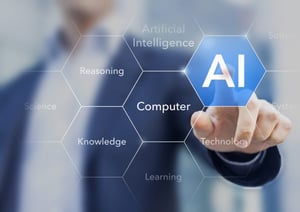In a recent article from Computerwoche titled 'How AI Will Support Our Work in the Future,' the findings of the current Forrester study 'The Future of Work: Intelligent Machines Whispering to Your Employees' are presented. According to the US market researcher, there is no doubt that artificial intelligence systems and humans will collaborate as colleagues in the future.
Human and AI Working Together
 Chess professional Garry Kasparov, who was defeated by IBM's Deep Blue system, is quoted in the study. He does not believe that AI systems alone are the better chess players. Instead, humans who can access AI systems and their rapid analyses but complement them with human evaluations. He calls such a tandem a 'Centaur.' Forrester assumes that such tandems - the Centaur is a mythical creature from Greek mythology consisting of a human and a horse - will work in companies in the future.
Chess professional Garry Kasparov, who was defeated by IBM's Deep Blue system, is quoted in the study. He does not believe that AI systems alone are the better chess players. Instead, humans who can access AI systems and their rapid analyses but complement them with human evaluations. He calls such a tandem a 'Centaur.' Forrester assumes that such tandems - the Centaur is a mythical creature from Greek mythology consisting of a human and a horse - will work in companies in the future.
Management and employees benefit from actionable recommendations
Contrary to these rather futuristic scenarios, AI for data condensation and analysis in project management has long been established. In the form of actionable recommendations, it provides managers with reliable decision-making bases, especially for selecting the right projects and risk management in portfolios. It also relieves project managers and employees of detailed, repetitive tasks that are time-consuming.
Creating acceptance for digital support
But how can managers and entrepreneurs be persuaded to accept these software-driven recommendations? Analogous to the established concept of the Customer Journey, employees go through an Employee Journey according to Forrester. In collaboration with the 'digital colleagues' examined in the study, this journey comprises four stages. This process can also be applied to the introduction of AI-driven recommendations. It begins with a specific need - or uncertainty or overload situation. Next, the company clarifies how the 'digital colleague' - or the software - is supposed to meet this need or provide relief through task redistribution and prioritization. Once the goal of the human employee has been defined, insight or future action can be derived. In any case, it is important that the barrier to using the software is kept as low as possible through simple usability.
Digicon 2018 showcases AI-optimized workforce scheduling
Visitors to Digicon on November 21st and 22nd, 2018 in Munich can get an impression of existing AI-driven recommendations. One of the highlights is the showcase of the Can Do Hours mobile app for optimized workforce scheduling using Artificial Intelligence. Employees can efficiently and conveniently track time for projects, line activities, and basic loads. One charming feature is that the app suggests an optimal sequence of tasks to be completed, which employees can follow - but are not required to - in order to best meet all challenges. This ensures that humans remain in control of the situation. You can read the full article from Computerwoche on 'How AI Will Support Our Work in the Future' here.
Jetzt anmelden - Can Do Newsletter
Our blog provides well-founded and practical content on project management, resource management, and the use of AI in businesses. Our goal is to equip professionals and decision-makers with tools, strategies, and inspiration to manage their projects and resources more efficiently and successfully.
Why Do Projects Fail? 5 Common Reasons - And How to Avoid Them
Projects are often complex, and even with the best intentions and a competent team, success can elude us. But why do so...
Cost-Cutting - Increasing Efficiency Without Additional Resources
Cost-cutting is currently at the top of the agenda for many companies. In the face of economic uncertainty and rising...
.png?width=200&height=80&name=CanDo%20Logo%20transparent%20(500%20x%20200%20px).png)
